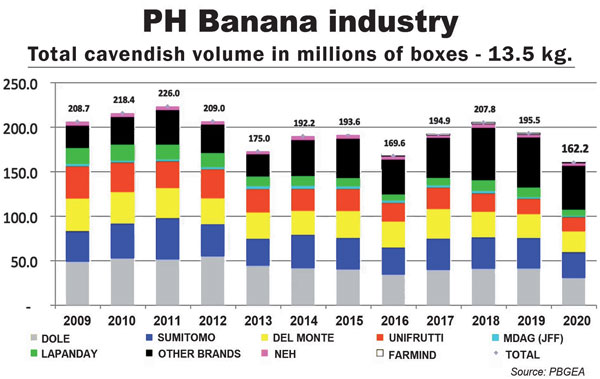The Asian Development Bank (ADB) has kept its growth outlook for the Philippines for this year and next, according to its latest report.
The supplement to ADB’s flagship economic publication Asian Development Outlook 2021 released yesterday showed the multilateral agency’s growth projections for the Philippines this year and in 2022 remain at 4.5 percent and 5.5 percent, respectively.
Both figures are well below the Development Budget Coordination Committee’s (DBCC) own projections of six to seven percent in 2021, seven to nine percent in 2022 and six to seven percent in 2023 and 2024.
The ADB meanwhile sees the country’s inflation rate for the year to be at 4.1 percent, and 3.5 percent next year, same as the numbers released in its April report.
“In the Philippines, inflation averaged 4.4 percent in the first six months of 2021, easing to 4.1 percent in June. In May, the government undertook temporary measures to augment food supply including reducing tariffs on rice and meat imports and allowing more pork imports under low-tariff minimum access volume terms,” the ADB said in its latest report.
“April inflation projections for 2021 and 2022 are maintained,” it added.
In its April report, the ADB downgraded its 2021 growth forecast for the Philippines from the 6.5 percent projection released in December, citing the implementation of tighter quarantine restrictions in the National Capital Region and adjacent provinces during the summer, and the projected subdued private investments.
The DBCC on Monday announced it kept its projections for the country’s gross domestic product (GDP) growth rates as it emphasized its support to manage risks and continue the gradual and safe reopening of the economy, subject to the strictest compliance to minimum public health standard
“The DBCC is optimistic that the country’s GDP may return to its pre-pandemic levels as early as 2022. The DBCC will review the GDP growth projections after the release of the Q2 GDP in August,” a statement sent by the Department of Budget and Management said.
The DBCC has revised its growth forecast for good exports this year amid the expected recovery in external demand.
The exports growth projection has been revised to 10 percent this year from the previous outlook of eight percent.
The outlook for the growth of services exports for 2022 was also revised to seven percent from the previous figure of six percent, amid the projected improvements in travel and business process outsourcing receipts due to the gradual reopening of the economy.
Revenue projections for the medium-term were retained, and the estimated disbursements for 2021 and 2022 were also kept.
Disbursements have been adjusted downwards to P5.02 trillion in 2023 and P5.3 trillion in 2024, from previously revised estimates of P5.11 trillion and P5.4 trillion, respectively, due to the revised projections for the National Tax Allotment (NTA).
The infrastructure program disbursement for 2022 is projected to increase to P1.29 trillion from the P1.25 trillion original estimate, the DBCC said.
“It will slightly taper off to P1.28 trillion in 2023 following the updated projections for the NTA and Bangsamoro Autonomous Region in Muslim Mindanao Block Grant, and will reach P1.35 trillion in 2024. The infrastructure program will average 5.4 percent of GDP over the next three years,” the DBCC said.
The deficit program for 2021 is retained at 9.3 percent of GDP.
Over the medium-term, the deficit path will be on a downward trajectory at 7.5 percent in 2022, 5.9 percent in 2023 and 4.9 percent in 2024.
“This fiscal consolidation strategy will continuously be adopted by the government to ensure fiscal sustainability over the medium-term and to bring back the country’s deficit to pre-pandemic levels,” the DBCC said.
Meanwhile stockbroker SB Equities Inc. said the economy will still likely grow by 6.1 percent for the whole year provided the vaccination rollout is expedited to boost business and consumer confidence in the second half of the year.
The Security Bank-affiliated stockbroker flagged the recent outlook downgrade of the economy by credit rating firm Fitch Ratings and the emerging headwinds given the emergence of highly transmissible coronavirus variants, prolonged quarantine restrictions, inflationary pressures and bottlenecks to vaccine supply and distribution, among others.
Fitch last week lowered its outlook for the Philippines to negative from stable, citing weakening fiscal finances and increased credit profile risks, though it affirmed Philippines’ investment grade score of BBB.
“Overall, we think the negative outlook raises the likelihood of a rating downgrade, and such expectation could exert upward pressure on bond yields and the exchange rate and pose downside risk to our equity market outlook,” SB Equities said.
SB Equities noted in its downward revision of outlook the rising credit risks “alongside headwinds on medium- term economic growth and potential challenges in normalizing the economic policy responses to the pandemic.”
Fitch projected the country’s GDP growth to grow 5 this year, before picking up speed to grow 6.6 percent next year, and 7.3 percent in 2023. (With Ruelle Castro)




